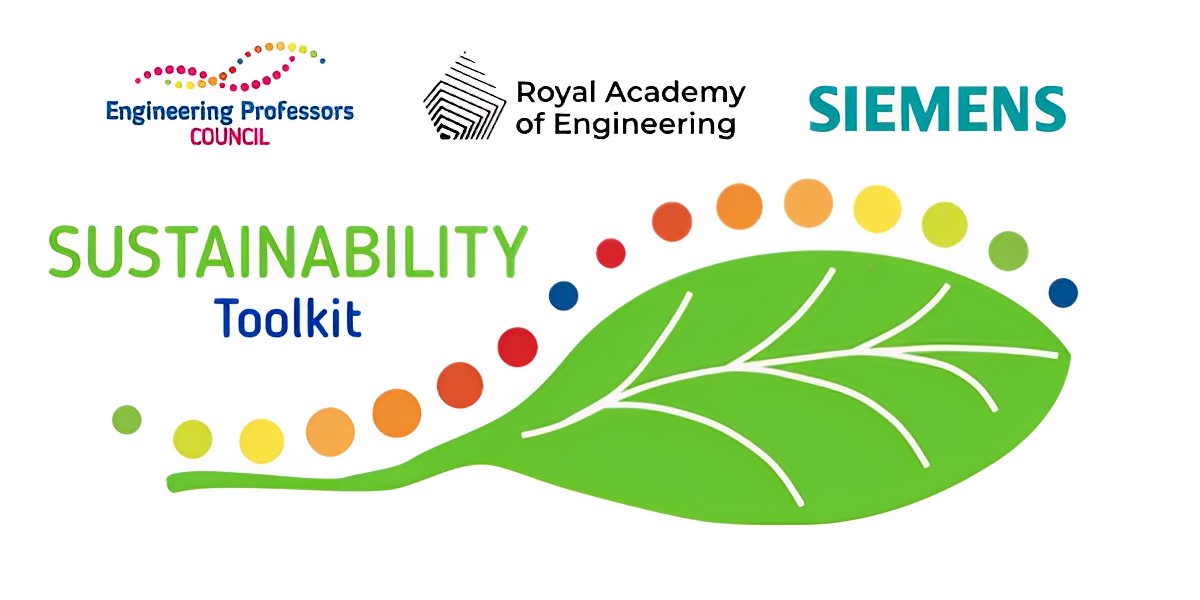Author: Cigdem Sengul, Ph.D. FHEA (Computer Science, Brunel University).
Topic: Embedding SDGs into undergraduate computing projects using problem-based learning and teamwork.
Tool type: Guidance.
Relevant disciplines: Computing; Computer science; Information technology; Software engineering.
Keywords: Sustainable Development Goals; Problem-based learning; Teamwork; Design thinking; Sustainability; AHEP; Pedagogy; Higher education; Communication; Course design; Assessment; STEM; Curriculum design.
AHEP mapping: This resource addresses two of the themes from the UK’s Accreditation of Higher Education Programmes fourth edition (AHEP4): The Engineer and Society (acknowledging that engineering activity can have a significant societal impact) and Engineering Practice (the practical application of engineering concepts, tools and professional skills). To map this resource to AHEP outcomes specific to a programme under these themes, access AHEP 4 here and navigate to pages 30-31 and 35-37.
Related SDGs: All 17; see specific examples below for SDG 2 (Zero Hunger); SDG 13 (Climate Action).
Who is this article for? This article should be read by educators at all levels in Higher Education who wish to embed sustainable development goals into computing projects.
Supporting resources:
- The 2030 Agenda for Sustainable Development
- Europe Sustainable Development Report 2022 with Interactive Dashboards
- The Double Diamond
- World Food Programme’s Hunger Map
- Climate Mind
Premise:
Education for Sustainable Development (ESD) is defined by UNESCO (2021) as: “the process of equipping students with the knowledge and understanding, skills and attributes needed to work and live in a way that safeguards environmental, social and economic wellbeing, in the present and for future generations.” All disciplines have something to offer ESD, and all can contribute to a sustainable future. This guide presents how to embed the Sustainable Development Goals (SDGs) into undergraduate computing projects, using problem-based learning and teamwork as the main pedagogical tools (Mishra & Mishra, 2020).
Embedding Sustainable Development Goals (SDGs) into computing group projects:
Typically, the aim of the undergraduate Computing Group Project is to:
- start preparing students for a professional career in the computing industry.
- familiarise the students with working in software development teams.
- give them the experience of delivering a non-trivial software system.
This type of project provides students with an opportunity to integrate various skills, including design, software development, project management, and effective communication.
In this project setting, the students can be asked to select a project theme based on the SDGs. The module team then can support student learning in three key ways:
1. Lectures, labs, and regular formative assessments can build on lab activities to walk the project groups through a sustainability journey that starts from a project pitch, continues with design, implementation, and project progress reporting, and ends with delivering a final demo.
2. Blending large classroom teaching with small group teaching, where each group is assigned a tutor, to ensure timely support and feedback on formative assessments.
3. A summative assessment based on a well-structured project portfolio template, guiding students to present and reflect on their individual contribution to the group effort. This portfolio may form the only graded element of their work, giving the students the opportunity to learn from their mistakes in formative assessments and present their best work at the end of the module.
Mapping the learning outcomes to the eight UNESCO key competencies for sustainability (Advance HE, 2021), the students will have the opportunity to experience the following:
- Group work: The students plan, manage, and track a substantial group activity, understanding and applying the principles of professional and ethical behaviour in a group context. They “recognise that a collective effort is not just a simple sum of each individual’s effort but is likely to be more complex and have multiple drivers that may be personal, political or communal” (Advance HE, 2021, p. 24).
- Open-ended problem: The groups take an open-ended problem, collect, and analyse relevant information and define the requirements. They will “identify the tensions between the 17 SDGs and recognise their interconnections” (Advance HE, 2021, p. 24) and work towards “creating their visions for the future” (Advance HE, 2021, p. 25).
- Non-trivial software development: The students will independently and systematically design, develop, and evaluate a piece of software that is data-driven and has non-trivial functionality. This way, they will “develop and implement innovative actions that further sustainable development at the local level and beyond” (Advance HE, 2021, p. 27).
- Alternative solutions: They will analyse complex systems and compare and evaluate alternative problem solutions according to given criteria, including from a technical perspective.
- Communication: They will effectively present ideas and solutions, recognising the importance of “verbal and non-verbal communication skills and their role in group cohesion” (Advance HE, 2021, p. 28).
More specifically, sustainable development can be embedded following a lecture-lab-formative assessment-summative assessment path:
1. Introduction lecture: Introduce the SDGs and give real-life examples of software that contribute to SDGs (examples include: for SDG 2 – Zero Hunger, the World Food Programme’s Hunger Map; SDG 13 – Climate Action, Climate Mind ). The students then can be instructed to do their own research on SDGs.
2. Apply design thinking to project ideation: In a lecture, students are introduced to design thinking and the double-diamond of design to use a diverge-converge strategy to first “design the right thing” and second “design things right.” In a practical session, with teaching team support, the students can meet their groups for a brainstorming activity. It is essential to inform students about setting ground rules for discussion, ensuring all voices are heard. Encourage students to apply design thinking to decide which SDG-based problem they would like to work on to develop a software solution. Here, giving students an example of this process based on a selected SDG will be useful.
3. Formative assessment – project pitch deliverable: The next step is to channel students’ output of the design thinking practical to a formative assessment. Students can mould their discussion into a project pitch for their tutors. Their presentation should explain how their project works towards one or more of the 17 SDGs.
4. Summative assessment – a dedicated section in project portfolio: Finally, dedicating a section in a project portfolio template on ideation ensures students reflect further on the SDGs. In the portfolio, students can be asked to reflect on how individual ideas were discussed and feedback from different group members was captured. They should also reflect on how they ensured the chosen problem fits one or more SDGs, describe the selection process of the final software solution, and what alternative solutions for the chosen SDG they have discussed, elaborating on the reasons for the final choice.
Conclusion:
Computing projects provide an excellent opportunity to align teaching, learning, and assessment activities to meet key Sustainable Development competencies and learning outcomes. The projects can provide transformational experiences for students to hear alternative viewpoints, reflect on experiences, and address real-world challenges.
References:
Advance HE. (2021) Education for sustainable development guidance. (Accessed: 02 January 2024).
Lewrick, M., Link, P., Leifer, L.J. & Langensand, N. (2018). The design thinking playbook: mindful digital transformation of teams, products, services, businesses, and ecosystems. New Jersey: John Wiley & Sons, Inc, Hoboken.
This work is licensed under a Creative Commons Attribution-ShareAlike 4.0 International License.
Any views, thoughts, and opinions expressed herein are solely that of the author(s) and do not necessarily reflect the views, opinions, policies, or position of the Engineering Professors’ Council or the Toolkit sponsors and supporters.
To view a plain text version of this resource, click here to download the PDF.





